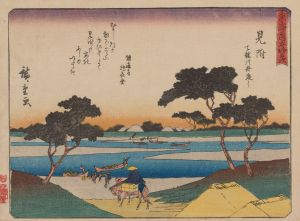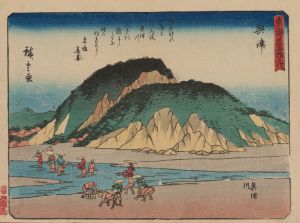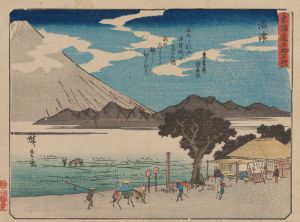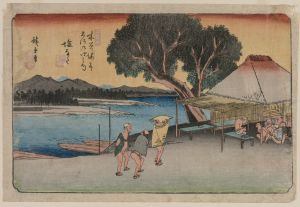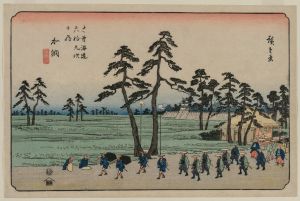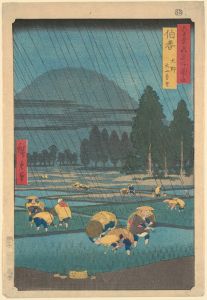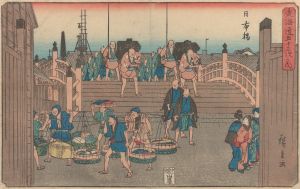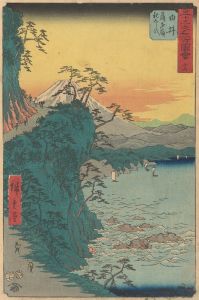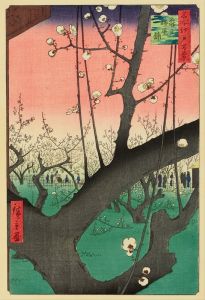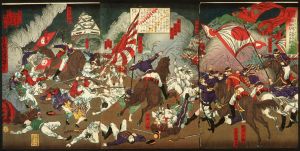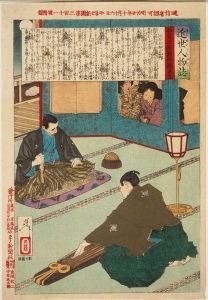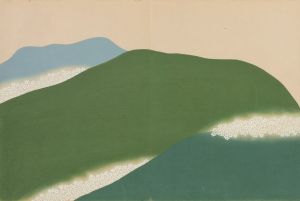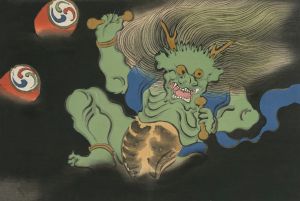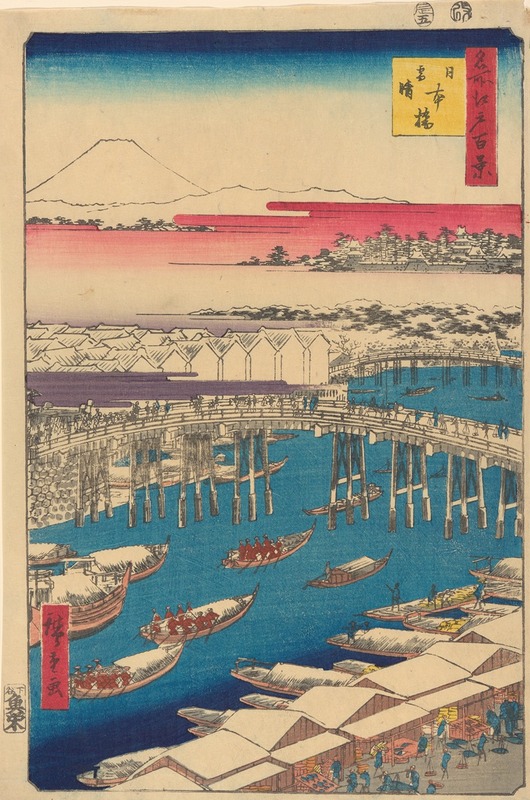
Nihonbashi; Clearing Weather after Snow
A hand-painted replica of Andō Hiroshige’s masterpiece Nihonbashi; Clearing Weather after Snow, meticulously crafted by professional artists to capture the true essence of the original. Each piece is created with museum-quality canvas and rare mineral pigments, carefully painted by experienced artists with delicate brushstrokes and rich, layered colors to perfectly recreate the texture of the original artwork. Unlike machine-printed reproductions, this hand-painted version brings the painting to life, infused with the artist’s emotions and skill in every stroke. Whether for personal collection or home decoration, it instantly elevates the artistic atmosphere of any space.
"Nihonbashi; Clearing Weather after Snow" is a woodblock print by the renowned Japanese ukiyo-e artist Andō Hiroshige. This artwork is part of Hiroshige's celebrated series "The Fifty-three Stations of the Tōkaidō," which was first published between 1833 and 1834. The series depicts various scenic spots along the Tōkaidō road, a vital route connecting Edo (modern-day Tokyo) to Kyoto during the Edo period in Japan. Hiroshige's works are known for their exquisite portrayal of landscapes and the transient beauty of nature, and this particular print is no exception.
The print "Nihonbashi; Clearing Weather after Snow" captures a scene at Nihonbashi, a famous bridge in Edo, which served as the starting point of the Tōkaidō road. Nihonbashi was not only a significant commercial hub but also a cultural and social center during the Edo period. The bridge itself was a symbol of prosperity and connectivity, linking various parts of the city and facilitating trade and travel.
In this artwork, Hiroshige masterfully illustrates the aftermath of a snowfall, with the weather clearing up to reveal a serene and picturesque landscape. The composition is characterized by its delicate balance and attention to detail, typical of Hiroshige's style. The snow-covered rooftops and the bridge are depicted with subtle gradations of color, capturing the soft light of a clear day. The figures in the scene, likely travelers and townspeople, are shown going about their daily activities, adding a sense of liveliness and movement to the tranquil setting.
Hiroshige's use of perspective and color in this print exemplifies his innovative approach to ukiyo-e, which often involved experimenting with Western techniques of perspective and shading. The artist's ability to convey the atmosphere and mood of the scene is evident in the way he contrasts the crisp whiteness of the snow with the vibrant hues of the sky and the surrounding environment. This interplay of colors and textures creates a harmonious and visually appealing composition that draws the viewer into the scene.
The "Fifty-three Stations of the Tōkaidō" series, including "Nihonbashi; Clearing Weather after Snow," played a significant role in popularizing the Tōkaidō road and the landscapes of Japan. Hiroshige's prints were widely appreciated not only for their artistic merit but also for their ability to evoke a sense of nostalgia and wanderlust among viewers. The series became highly influential, inspiring both Japanese and Western artists, and contributing to the global appreciation of Japanese art.
Hiroshige's work, including this particular print, is celebrated for its ability to capture the essence of a moment in time, blending realism with an idealized vision of nature. "Nihonbashi; Clearing Weather after Snow" remains a testament to Hiroshige's skill as an artist and his deep appreciation for the beauty of the natural world. Today, his prints continue to be admired for their artistic excellence and historical significance, offering a glimpse into the cultural and social landscape of Edo-period Japan.





